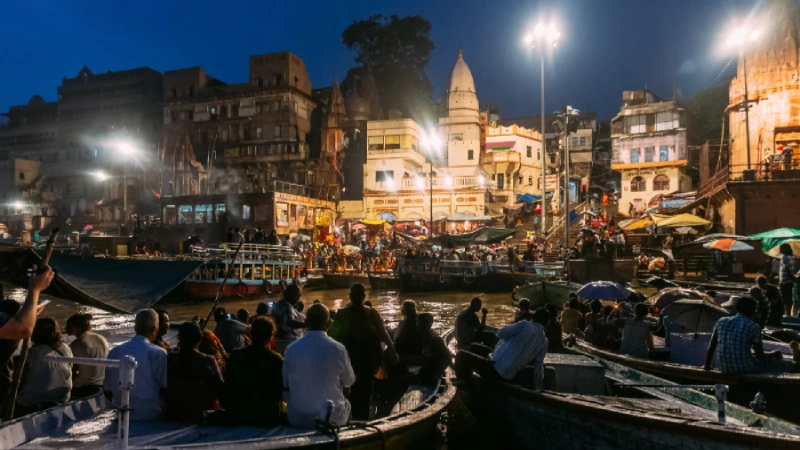Varanasi, often referred to as the spiritual capital of India, is also one of the oldest living cities in the world. With a history that dates back over 3,000 years, Varanasi is a treasure trove of ancient temples, historic landmarks, and cultural heritage. In this guide, we’ll take you on a journey through Varanasi’s rich history and heritage, exploring its ancient origins, architectural marvels, and cultural significance.
Why Varanasi’s History is Fascinating
Varanasi’s history is a tapestry of spirituality, culture, and resilience. The city has witnessed the rise and fall of empires, the spread of religions, and the evolution of art and architecture. Its ancient temples, ghats, and monuments stand as a testament to its glorious past and enduring legacy.
Ancient Origins of Varanasi
The Birth of Kashi
Varanasi, also known as Kashi, is believed to have been founded by Lord Shiva himself. According to Hindu mythology, the city is the abode of Lord Shiva and Goddess Parvati, making it one of the most sacred places in Hinduism.
Key Highlights:
- The name Kashi means “the city of light,” symbolizing spiritual enlightenment.
- The city is mentioned in ancient texts like the Vedas, Puranas, and Mahabharata.
Varanasi in Ancient Times
Varanasi has been a center of learning, culture, and spirituality since ancient times.
Key Highlights:
- The city was a major hub for trade and commerce during the Maurya and Gupta empires.
- It was a prominent center for Buddhism and Jainism, with Sarnath being the site of Buddha’s first sermon.
Architectural Marvels of Varanasi
Kashi Vishwanath Temple
The Kashi Vishwanath Temple is one of the most sacred temples in India, dedicated to Lord Shiva.
Key Highlights:
- The temple’s golden spire is a striking feature that can be seen from a distance.
- The current structure was built in 1780 by Queen Ahilyabai Holkar of Indore.
Tips for Visitors:
- Dress modestly and remove your shoes before entering.
- Be prepared for long queues, especially during festivals.
Sarnath
Located just 10 kilometers from Varanasi, Sarnath is where Lord Buddha delivered his first sermon after attaining enlightenment.
Key Highlights:
- The Dhamek Stupa and the Sarnath Museum are key attractions.
- The Lion Capital of Ashoka, found in Sarnath, is now India’s national emblem.
Tips for Visitors:
- Hire a guide to understand the historical significance of the site.
- Allocate 2–3 hours for your visit, including travel time.
Ramnagar Fort
Located on the eastern bank of the Ganges, Ramnagar Fort is a magnificent structure that showcases the grandeur of the bygone era.
Key Highlights:
- The fort houses a museum with a collection of vintage cars, royal artifacts, and ancient weapons.
- The fort’s architecture is a blend of Mughal and Indian styles.
Tips for Visitors:
- Visit during the early morning or late afternoon for the best views.
- Hire a guide to learn about the fort’s history and significance.
Cultural Heritage of Varanasi
Banarasi Silk Weaving
Varanasi is famous for its Banarasi silk sarees, which are known for their intricate designs and rich textures.
Key Highlights:
- The art of silk weaving has been passed down through generations.
- The sarees are often adorned with gold and silver zari work.
Tips for Visitors:
- Visit the local markets and weaving centers to see the artisans at work.
- Look for genuine silk by checking the fabric’s texture and shine.
Classical Music and Dance
Varanasi has a rich tradition of classical music and dance, with many renowned artists hailing from the city.
Key Highlights:
- The city is known for its Hindustani classical music and Kathak dance.
- Festivals like Ganga Mahotsav showcase the best of Varanasi’s cultural heritage.
Tips for Visitors:
- Attend a classical music or dance performance for a cultural experience.
- Visit during festivals to witness the city’s vibrant cultural scene.
Tips for Exploring Varanasi’s History and Heritage
Plan Your Visit
- Research the historical sites and plan your itinerary in advance.
- Allocate enough time to explore each site thoroughly.
Respect Local Customs
- Dress modestly and follow the rules and customs of the temples and ghats.
- Be mindful of the spiritual significance of the places you visit.
Stay Safe and Healthy
- Drink bottled water and eat at hygienic places.
- Be cautious of your belongings in crowded areas.
Final Thoughts
Varanasi’s history and heritage are as rich and diverse as the city itself. From its ancient temples and ghats to its vibrant culture and traditions, every corner of Varanasi tells a story of its glorious past. So, plan your visit, immerse yourself in the city’s history, and take home memories that will last a lifetime.

